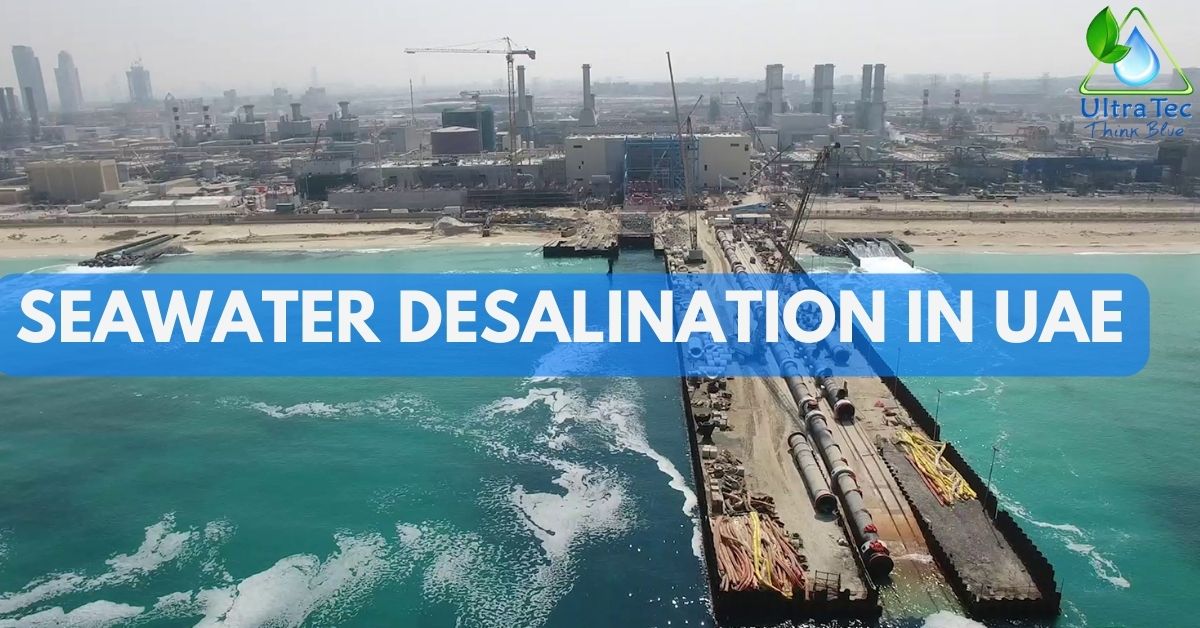SEAWATER DESALINATION in UAE: Meeting the Water Needs of a Dry Nation
In the heart of the arid Arabian Peninsula lies the United Arab Emirates (UAE), a land known for its luxury, innovation, and thirst for progress. Yet, beneath the glitz and glamour, there’s a constant battle for a most precious resource: water. The UAE’s solution to this age-old problem is as modern as it is ingenious—seawater desalination. This information will dive deep into the intricate world of seawater desalination in the UAE, exploring this vital process’s methods, challenges, and environmental impact.
The Oasis of Desalination: UAE’s Water Challenge
The Water Scarcity Dilemma
Water scarcity is a pressing issue in the UAE, where the climate is arid, and freshwater resources are scarce. With a growing population and an economy that thrives on industry and agriculture, the water demand is ever-increasing.
The Seawater Desalination Revolution
To meet the growing water demand, the UAE has turned to the vast Arabian Gulf as a solution. Seawater desalination has become the backbone of the nation’s water supply, providing a lifeline to millions.
Unraveling the Mysteries of Seawater Desalination
Distillation: The Old Guard
One of the earliest methods of seawater desalination in the UAE was distillation. This process involves heating seawater to create steam condensing it into freshwater. Though effective, it’s energy-intensive.
Reverse Osmosis: The Modern Marvel
The UAE has adopted reverse osmosis as the primary desalination method. It uses a semi-permeable membrane source to filter out salt and impurities from seawater, yielding freshwater with impressive efficiency.
Multi-Stage Flash (MSF) Distillation: A Hybrid Approach
To further optimize the desalination process, the UAE has also integrated Multi-Stage Flash Distillation, combining it with reverse osmosis for maximum freshwater output.
Challenges on the Salty Path
Energy Consumption Woes
One of the significant challenges of seawater desalination is its high energy consumption. The UAE is actively researching sustainable solutions to reduce its carbon footprint.
Environmental Impact
Discharging the highly saline brine back into the Gulf can harm marine ecosystems. UAE authorities are working on mitigating this impact through various eco-friendly initiatives.
The Road Ahead
As the UAE continues to embrace seawater desalination to secure its water future, it faces challenges and opportunities. Innovative technologies, increased energy efficiency, and sustainable practices are key to overcoming these hurdles.
Conclusion
Seawater desalination is not just a technological marvel but a lifeline in the land where deserts meet the sea. The UAE’s commitment to ensuring a sustainable and secure water supply for its people is impressive.
FAQs
Q1: Is seawater desalination the only source of freshwater in the UAE?
No, while seawater desalination is a major source of freshwater, the UAE also explores other avenues like wastewater treatment and imported water sources.
Q2: What is the environmental impact of desalination in the UAE?
Brine discharge can have environmental consequences, but the UAE is actively working on minimizing these impacts through eco-friendly practices.
Q3: How does the UAE manage the energy consumption of desalination?
The UAE is investing in advanced technologies and renewable or second energy sources to reduce the energy footprint of desalination.
Q4: Are there any plans for international cooperation in desalination technology?
The UAE is known for collaborating with international partners to advance desalination technology and share expertise.
Q5: Can tourists visit desalination plants in the UAE?
Some desalination plants offer guided tours, allowing tourists to learn about this vital process firsthand.


